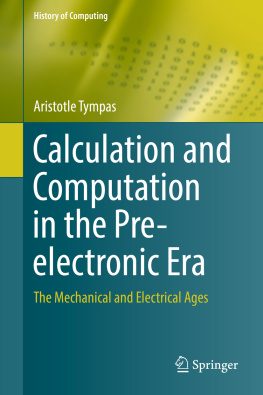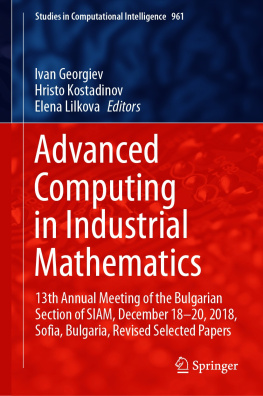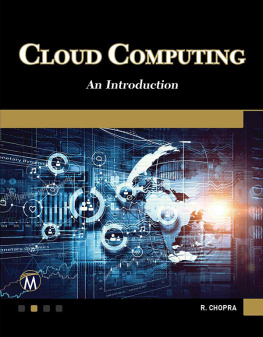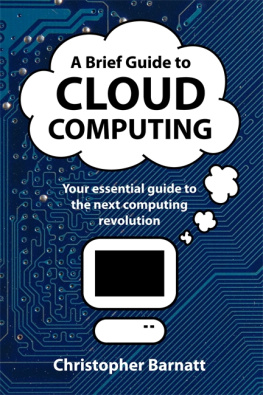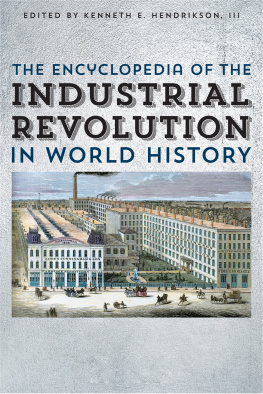1. Introduction
1.1 Topic, Period, and Argument
This is a book on the history of computing technology before late capitalist modernity (historical capitalism)in the vocabulary of the book, a history before the electronic era. As I gradually enter into the narrative of the history of general slide rules (Chap. ), I move on to refine my argument.
The book covers the concluding decades of what Eric Hobsbawm has called the long nineteenth century (1780s1910s)a century that started with the political revolution in France and the economic revolution in England and ended with World War I. This century was defined by the emergence and prevalence of industrial capital. In his trilogy on the long nineteenth century, Hobsbawm refers to the concluding decades of this century as the age of empire (18751914). The book covers in more detail the interwar years that followed (1910s1940s). According to Hobsbawm, this was the formative sub-period of the short twentieth century. Because of the two global wars and the intervening economic crisis, he calls the decades between the 1910s and the 1940s the age of catastrophe. The age of empire was the concluding part of the heydays of what in this book I refer to as the mechanical era, the age of catastrophe the climax of the electrical era.
Historians of computing have so far separated between two periods of computing history: the period before World War II, described as the period of the prehistory of computing or the period of computing before computers, and the period of the actual history of computing, i.e., the period after World War II. According to this periodization, there was only one break in computing history, amounting to a computing revolution that took place in and around World War II. I argue that there is an historical continuity in computing technology throughout historical capitalism. The real break took place much earlier, and it coexisted with the revolution from precapitalist to capitalist social formations: from the time of the introduction of the slide rule and the calculating machine (which was also the time of the invention of the calculus). The difference between our computing technology (that of late capitalism) and that of earlier capitalism looks more like a similarity if considered from a non-capitalist perspective. In regard to the decades considered in this book and what precedes and follows, my main argument is that there was no real break in the pattern of computing technology, just an impressively expansive reproduction of the pattern of capitalist computing technology.
1.2 Theoretical Framework
To classify the artifacts discussed in this book, slide rules (Chaps.
I also experiment with a Wittgensteinian approach in order to argue that computing was part of the process of active nature making, not a passive representation of nature as it was. Instead of interpreting the computer by employing standard STS (Science and Technology Studies) concepts such as cyborg, actant, heterogeneous engineering, etc., I further chose to use of the generic Lacanian concept imago (image): computing provided with an imaginary orderthe images, the mirrorsso as to engineer the transformation of nature as it was (the Lacanian order of the real) according to what nature was supposed to be (the Lacanian order of the symbolic). For the purpose of this book, the symbolic is in this book discussed as equivalent to the ideal. I use this mostly when I seek to interpret the pursuit of ideally automatic computers.
I introduce my theoretical framework gradually so that it is in contact with the progressive introduction of the various artifacts from the history of computing. For example, I am not able to fully explain why I treat analyzers and graphs as the two poles of the constant (higher ratio of machine to human capital) and variable capital mode of computingslide rules placed somewhere betweenbefore reaching the chapter on graphs (Chap. ).
1.3 Line of Argumentation
The book argues in favor of moving beyond the uncritical projection of the analog-digital computing demarcation to the whole of historical capitalism. Analyzers, slide rules, and graphs are understudied because they are now placed under analog computing. Most histories of computing have neglected analog computing altogether, on essentialist grounds, by assuming that it is technically different from (and inferior to) digital computing. A minority of historians study the history of analog computing advantages without, however, moving on to question the absolute and primary demarcation between analog and digital computing. I differ from both in that I suggest that we start by substituting a relative-social for an absolute-technical demarcation between the two.
In my opinion, what we now call digital computing corresponds to the perspective of the analyst , whereas what we now call analog computing corresponds to the perspective of the computor . Analog computing is what was ideologically devaluated as technically inferior so as to lower the variable computing capital (computing wages) as a whole. Over the course of this book, I point to antecedents to the analog-digital computing debate in comparisons between classes of computing artifacts (e.g., slide rules versus calculating machines ) and in comparisons within classes of computing artifacts (e.g., nomographs versus circle diagrams ).
In my opinion, the history of the configuration of the prevalence of the aforementioned ideological devaluation is no different from the history of the formation of the hegemony of the ideology of presenting computers as intelligent-thinking machines. More specifically, the ideology of intelligent machines aimed at presenting the computing machine as the source of value so as to relatively lower the part of the capital that went to computing wages and, as a result, so as to allow for the extraction and accumulation of surplus computing value. The surplus computing value accumulated was transformed into new computing machines so that the capitalist mode of computing production could keep on expanding successfullyan expansion that was key for the expansion of the capitalist mode of production as a whole.
In parallel to providing with a perspective to interpret the ideology of intelligent computing machines, I suggest that we explain the easiness by which the electronic computer was embraced as an intelligent machine by reference to the previous history of presenting artificial lines and network analyzers as intelligent machines. Noticeably, even slide rules were actually presented as intelligent machines. This is why I am also interested in versions of the ideology of intelligent machines that came along versions of the analyst - computor relationship. To serve this interest, I make the study of engineering comparisons of computing techniques the center of this dissertation.
1.4 Strategy Regarding Primary Sources
In searching through the collections of old engineering journals and books, along with other technical material, I initially had to follow a tree and branch approach, letting one reference lead me to others. I gradually moved on to add a vertical reading of engineering journals. Moving backward from the history of, for example, the network analyzer of Vannevar Bush (see Chap. ), this reading heuristic led me to the transition from the artificial line to the network analyzer . Moving forward to the present, this strategy led me to the transition from the network analyzer to the electronic computer.

